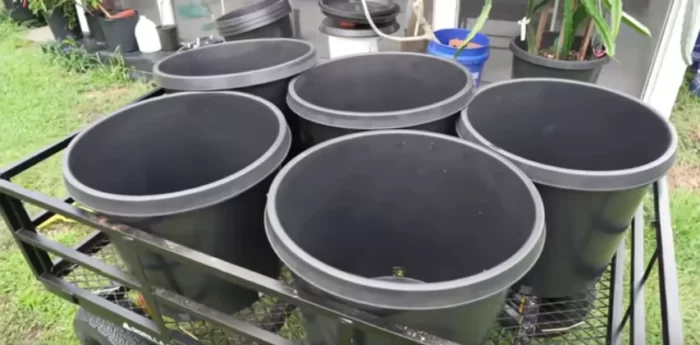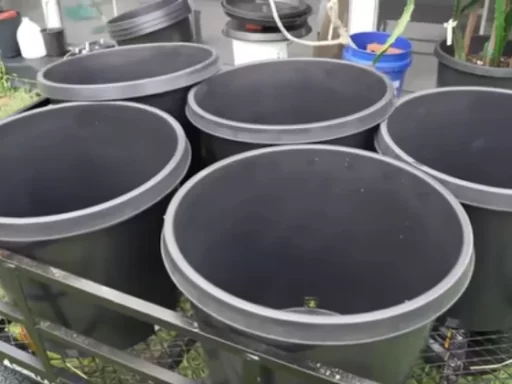Container gardening is a fantastic way to grow your own food, even if you’re limited on space. Whether you have a small balcony or a corner in your backyard, container gardens can thrive and produce plenty of delicious vegetables, herbs, and fruits. In this article, we’ll explore how to set up a successful container garden, choosing the right containers, planting tips, and how to care for your plants. By the end of this guide, you’ll be ready to grow your own food and enjoy the benefits of fresh, home-grown produce.
Why Choose Container Gardening?
Container gardening offers several advantages:
- Space Efficiency: Even the smallest of spaces, such as balconies, patios, or windowsills, can accommodate a container garden.
- Mobility: You can move your containers to different spots depending on sunlight or weather conditions.
- Flexibility: Containers allow you to tailor the soil mix to specific plant needs, like acidic soil for blueberries.
- Control Over Growing Conditions: You have greater control over soil, water, and fertilizer, ensuring your plants get the best care.
Whether you’re a seasoned gardener or just starting out, container gardening is a versatile way to grow a variety of plants.
Choosing the Right Container
The first step in creating a successful container garden is selecting the right container. Not all plants are suited for the same type of container, and it’s important to match your plant with the appropriate pot.

1. Size and Depth of Containers
When choosing a container, consider the size and depth of your plant’s root system. For instance:
- Larger plants like tomatoes or squash need deeper, more spacious containers (about 5-gallon pots).
- Shallow-rooted plants such as salad onions or herbs do well in smaller, shallower pots.
If you’re growing a larger plant, opt for a container that allows the roots plenty of room to grow. On the other hand, shallow containers are perfectly fine for smaller plants with limited root systems.
2. Drainage is Key
Whatever container you choose, make sure it has proper drainage holes at the bottom. Excess water needs to be able to drain freely, or your plants risk drowning. If your container doesn’t have drainage holes, you can easily drill them.
3. Repurpose Containers
You don’t need to buy expensive containers. You can repurpose many items, such as old tubs, buckets, or even children’s sandpits. Just make sure that if you’re using plastic containers, they are food-grade, so harmful chemicals don’t leach into the soil and contaminate your plants.
4. Container Material
- Terracotta pots are attractive and porous, allowing air to reach the roots. However, if they’re not frost-proof, they can crack in cold weather.
- Plastic pots are lightweight and durable but retain heat, which could damage plant roots in hot climates. For this reason, lighter-colored pots are better in warmer regions.
Larger pots will also retain moisture longer, requiring less frequent watering, while smaller pots dry out more quickly.
Filling Your Container: Soil and Mix
Once you have your containers ready, it’s time to fill them with the right soil mix.
1. High-Quality Potting Mix
Investing in a good potting mix is essential for healthy plant growth. Choose a mix that’s free of peat (for environmental reasons), drains well, and retains moisture.
2. DIY Potting Mix
If you’re looking to save money, you can mix your own potting soil. A basic DIY mix consists of:
- 50% compost for nutrients
- 50% coir or composted bark to improve drainage
- Perlite to make the mix lighter and more aerated
You can also add organic fertilizers, like fish, blood, and bone meal, to boost plant fertility. Mixing your own soil gives you control over the nutrients your plants receive.
Planting Ideas for Containers
Now comes the fun part—planting your containers! Different vegetables and herbs have different needs, so here’s a brief overview of some great container-friendly plants.
1. Herbs and Salad Greens
These are perfect for shallow containers. Herbs like parsley, basil, and cilantro can thrive in smaller pots. Similarly, salad greens like lettuce, spinach, and arugula grow well in shallow containers and can be harvested frequently.
2. Root Vegetables
Beets, radishes, and carrots are excellent for container gardening, provided you give them enough depth. A 12-inch-deep pot is usually enough to accommodate these root vegetables.
3. Larger Plants
Tomatoes, cucumbers, zucchini, and squash need larger containers with ample space to grow. These plants benefit from containers with plenty of depth and support structures like trellises or stakes for climbing or vining plants.
4. Fruiting Plants
Blueberries, strawberries, and citrus trees can also be grown in containers. Blueberries prefer acidic soil, so make sure to use a potting mix designed for acid-loving plants.
Caring for Your Container Garden
Maintaining your container garden is easy if you keep a few essential tips in mind.
1. Watering
Proper watering is crucial. The best way to check if your plants need watering is to stick your finger into the soil about an inch deep. If it feels dry, it’s time to water. Be cautious not to overwater, especially in containers without adequate drainage.
In hotter climates, you may need to water your plants twice a day, especially in smaller pots. Larger pots retain moisture longer, so they don’t need as frequent watering.
2. Mulching
Mulching helps retain moisture, reduce weeds, and regulate soil temperature. Use organic materials like straw, shredded bark, or compost as a mulch to help keep your container plants healthy.
3. Fertilizing
Once your plants begin to fruit or flower, they’ll need extra nutrients. Use an organic fertilizer high in potassium (such as liquid seaweed or tomato feed) for fruiting plants. For leafy greens, a balanced fertilizer every few weeks will suffice.
4. Pest Control
Keep an eye out for common pests like aphids or slugs. For smaller infestations, you can remove pests by hand, or use organic pest control methods like neem oil or insecticidal soap.
Frequently Asked Questions
1. What are the best vegetables to grow in containers?
Herbs, salad greens, tomatoes, zucchini, and root vegetables like carrots and beets are perfect for container gardening.
2. How often should I water my container plants?
It depends on the plant and the weather, but generally, container plants need to be watered every 1-2 days, especially in hot weather.
3. Can I use regular garden soil for container gardening?
It’s better to use potting mix, as regular garden soil can become compacted and prevent proper drainage.
4. What type of container is best for tomatoes?
A large container, at least 5 gallons, is ideal for tomatoes. Make sure the container has good drainage.
5. How can I prevent pests in my container garden?
Regularly inspect your plants for pests, use organic pest controls like neem oil, and ensure good air circulation around your containers.
6. Can I grow fruit trees in containers?
Yes, small fruit trees like dwarf citrus trees can thrive in containers. Make sure the container is large enough to support the tree’s root system.
7. What’s the best soil mix for container gardening?
A peat-free potting mix or homemade mix of compost, coir, and perlite is ideal for most container gardens.





